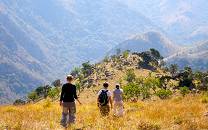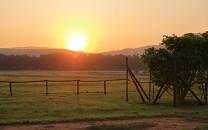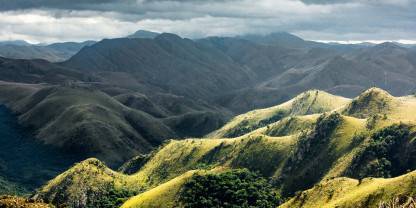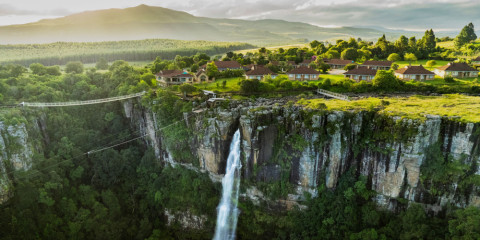Malolotja Nature Reserve is a prime hiking destination for wilderness enthusiasts. There isn’t a lot of wildlife in the reserve, but you are likely to see zebra, wildebeest and different antelope species. The reserve is home to several special birds of interest in Eswatini (formerly Swaziland), and the unique mountain flora is also worth noting. There are trails of different lengths, including overnight tracks for the truly adventurous. The Malolotja Canopy Tour will give you an adrenaline rush as you zip-line between platforms in the canopy.

-
Best Time To Go
- May to September (Dry season)
-
High Season
- Dec to Jan (It never gets very busy)
-
Size
- 180km² / 70mi²
-
Altitude
-
640-1,829m /2,100-6,000ft
 View Photos
View Photos
 View Photos
+24
Photos
View Photos
+24
Photos
Pros & Cons
- Off-the-beaten-track destination
- Excellent hiking
- Many camping spots in the mountains
- Unspoiled wilderness
- Activities include walking, mountain biking and the canopy tour
- Not much wildlife
- Only basic log-cabin accommodation inside the park
Wildlife
Malolotja is not primarily a wildlife-viewing destination, but this tract of pristine wilderness is home to a good variety of species. Zebra and blue wildebeest are often seen grazing together. More interesting is the black wildebeest, a rare highland special. Blesbok are quite common but the largest of all antelopes, the eland, is harder to spot. Klipspringers can be found on rocky outcrops. Other small antelope species include oribi, red duiker, common duiker and the rare grey rhebok. Leopard is present but the chance of seeing one is very small.
Scenery
The rugged terrain of Malolotja includes rolling grasslands, deep ravines and patches of woodland. Three rivers, fringed with , run through the reserve. Ngwenya Mountain, Eswatini's second-highest mountain, stands out. Another landmark is Malolotja Falls, the highest waterfall in the country, with a drop of 89m/292ft.
Weather & Climate
Malolotja’s weather and climate is generally comparable to that of Eswatini. See:
Best Time To Visit
Malolotja can be visited throughout the year. The dry winter months from May to September are ideal, but the nights can be bitterly cold. The wet summer months are more pleasant, but peak temperatures can be high for hiking and rain can interfere as well. Mist is common throughout the year, but particularly from October to March. April and September are lovely months because the nights are less cold, but it doesn’t rain a lot. The scenery is more appealing in the wet summer months from October to April.
How To Get to Malolotja NR
Malolotja can usually be accessed in any vehicle, although some of the roads in the reserve are 4x4 only. Malolotja is located about 30km/20mi from Mbabane, and the drive takes about 40 minutes.
Health & Safety
Please read our malaria and vaccinations page for Eswatini, and our general wildlife viewing safety precautions page for more info:


